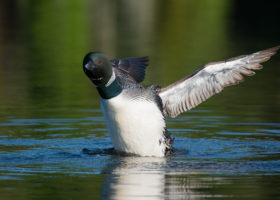
Give ‘Em Space: Observe Nesting Loons from a Distance
The Vermont Fish & Wildlife Department is asking boaters and anglers to enjoy loons from a safe distance this summer.
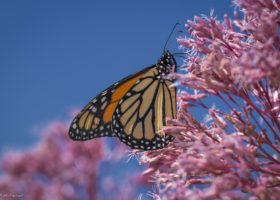
Take Part in the 2018 International Monarch Monitoring Blitz!
From July 28 to August 5, butterfly watchers across North America are invited to take part in the International Monarch Monitoring Blitz to help provide a valuable snapshot of Monarch population status across their late summer range.
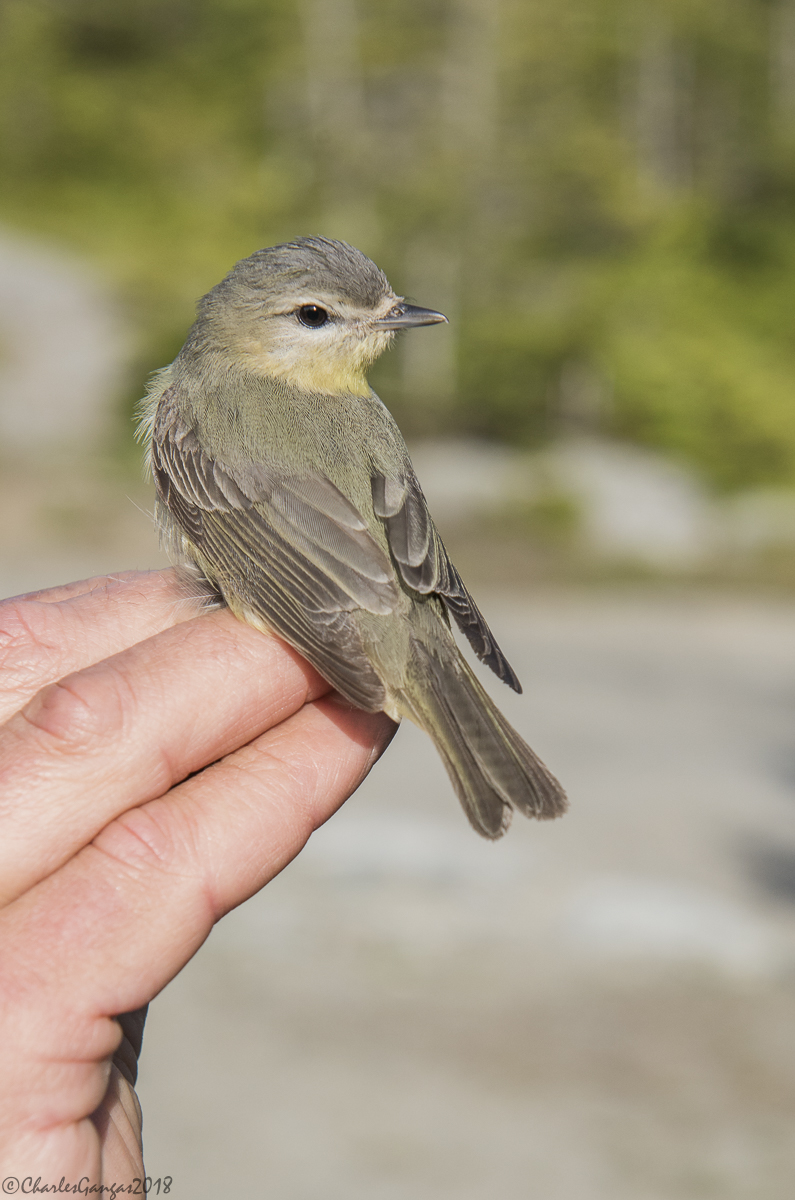
Field Update: Mansfield Yields Avian Surprises
Philadelphia Vireo, Least Flycatcher, juvenile White-winged Crossbill — VCE’s third 2018 field session on Mt. Mansfield produced several notable surprises among our 61 mist net captures. The addition of our Board of Directors provided energy, enthusiasm, and learning for all.

VCE Co-sponsors Upcoming Montpelier BioBlitz
Break out the binoculars and bandstands for BioBlitz 2018: a citywide nature festival and quest to catalog every form of life within Montpelier’s boundaries.
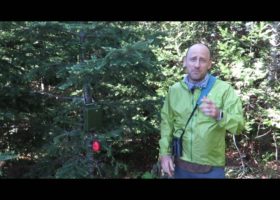
VCE Vlog: Field Update from the Great North Woods
VCE Director of Science John Lloyd recently emerged from the Great North Woods long enough to seek out a WiFi signal to share this brief update from the field. All of us here at VCE were relieved to see that the mosquitoes had not yet carried him away.
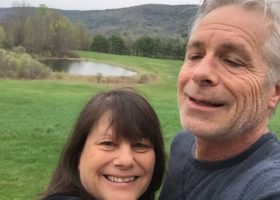
Grassland Ambassadors: Laughing Brook Farm
The Bobolink’s bubbly song has filled the summer fields of Julia and Greg Smist’s 100-acre farm in Westminster, VT for at least 30 years. A decade or so after buying the farm, Julia noticed fewer Bobolinks in the fields. Her observations echo a grim region-wide statistic: Bobolinks have declined by 75% in the region over the past 50 years.
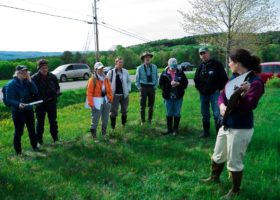
Hayfield Heroes: Landowners Key to Grassland Bird Conservation
Landowners often unknowingly control the fate of migratory grassland birds, and the possibilities for providing nesting habitat vary from one piece of land, and one landowner, to the next.
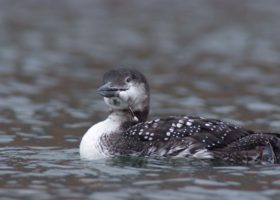
Lead Fishing Tackle Detrimental to NH Loon Population
A recent study of mortality in New Hampshire loons over 24 years reveals that ingestion of lead fishing gear (primarily jigs and sinkers) is the leading cause of death among adults. This troubling discovery helped spur a regulatory ban on sale and use of lead tackle, and lead-caused loon mortality rates have since declined statewide.
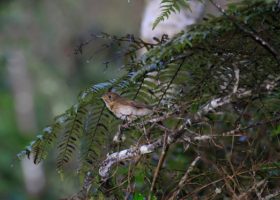
VCE Study Predicts Prime Habitat for Bicknell’s Thrush
A new study led by VCE biologist Kent McFarland used statistical modelling methods to identify remaining key habitat for female Bicknell’s Thrush in the fragmented forests of the Dominican Republic. Further, this study served as the driving force to conserve additional land to expand the thrush’s wintering habitat.
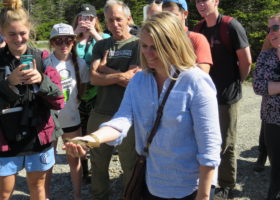
VCE Launches Field Season #27 on Mt. Mansfield
VCE’s inaugural 2018 field visit to Mt. Mansfield on May 30-31 yielded good weather, some surprise mist net captures, and an enthusiastic group of visitors, who were treated to a very obliging Bicknell’s Thrush in the hand.
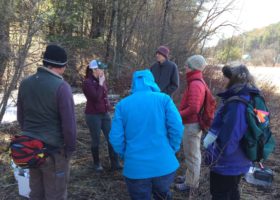
VCE Awarded 2018 TechGrant
VCE’s scientists continually seek to incorporate emerging technologies to enhance their data gathering and analysis capabilities, and thanks to a generous 2018 TechGrant award from the TechFoundation, VCE’s Vernal Pool Monitoring Project will benefit from such a technological boost.
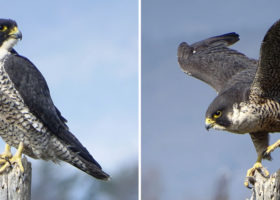
May 2018 Photo-observation of the Month
Congratulations to Shirley Zundell for winning the May 2018 iNaturalist Vermont photo-observation of the month. The image of a Peregrine Falcon was the most popular photo-observation.
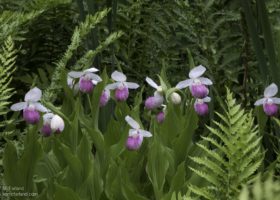
Field Guide to June 2018
Here in Vermont, we dream of June during the darkest days of winter. June is a dream here. Its days last forever. Here are some natural history wonders for the month from the Green Mountains.
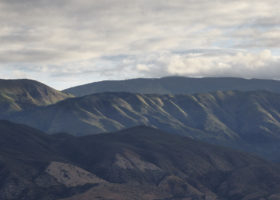
Success: Crossing Boundaries for Conservation
VCE announces finalization of the Strategic Conservation Plan for Sierra de Bahoruco National Park in the Dominican Republic. The plan, which VCE helped to both fund and facilitate, aims to preserve the park’s unique forested habitats for the benefit of plants, wildlife, and humans alike.
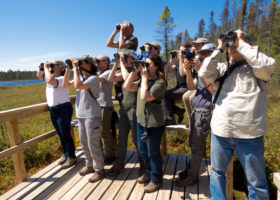
VCE Birdathon Terns up a Last-minute Surprise
Boreal birds, balsam fir spires and peat bogs proved an irresistible lure to the Green Mountain Goatsuckers, drawing us back to Vermont’s Northeast Kingdom for our 2018 Birdathon. From the Barton River wetlands to the larch and fir forests of Victory, we covered a lot of ground. Our species count topped out at 103, and the day’s most surprising bird was our very last tally.
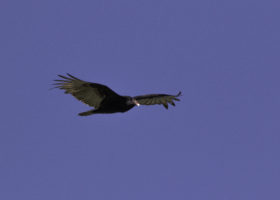
Outdoor Radio: Turkey Vultures Soar over the Capital
Outdoor Radio usually takes us to a mountain top, pond or forest to get close to wildlife. But this month, biologists Sara Zahendra and Kent McFarland are on top of the National Life building in Montpelier. For the past several years, National Life employees have been able to watch Turkey Vultures right out their windows.
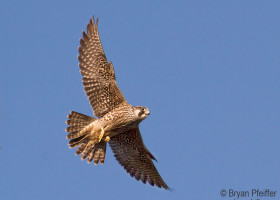
Vermont Cliff Tops and Overlooks Closed to Protect Nesting Peregrines
Hiking Vermont’s hillsides is a great way to enjoy a spring day, but the Vermont Fish & Wildlife Department and Audubon Vermont recommend checking to see if the area you’re planning to hike or climb is open. Several cliff areas are currently closed to protect nesting peregrine falcons.
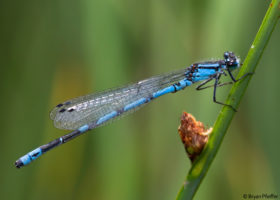
The Distinguished Dozen: Vermont Most Wanted Dragonflies
VCE and its collaborators are launching a new effort to locate rare and undiscovered dragonflies and damselflies, which could be flying at your nearest river, wetland or backyard pond. We’ll even train people who want to join in the pursuit of these charismatic insects.
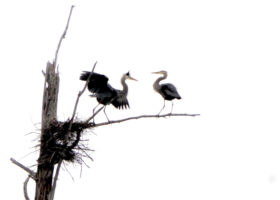
April 2018 Photo-observation of the Month
Congratulations to Kyle Jones for winning the April 2018 iNaturalist Vermont photo-observation of the month contest. The image of a pair of Great Blue Herons nesting was the most popular photo-observation.
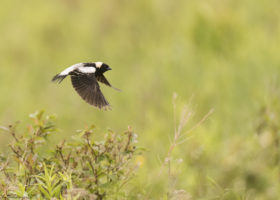
Mowing Hay and Growing Birds
In May, Bobolinks arrive to breed after making the longest trip of any migrant songbird in the Northeast. These tenacious travelers need our help to ensure that their annual 12,000-mile round-trip trek is not in vain. Learn more…
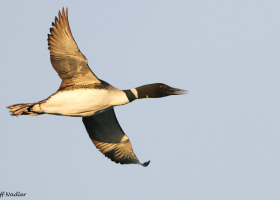
Loons and Late Ice
Loon pairs are somehow able to catch up in years of late ice-out so that their breeding schedule does not differ greatly from other years.
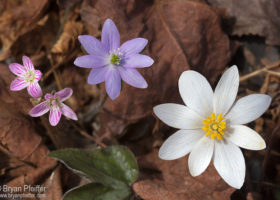
Field Guide to May 2018
The month of May is a show-off. Woodland wildflowers break out of the ground. Trees flower and leaves burst. Birds arrive on southern winds with song. May shouts of life and rejuvenation. Here’s a few bits of natural history for your May days.
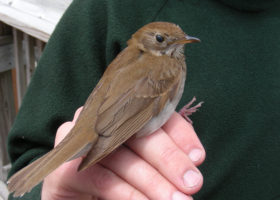
Forest Thrush Mix Up
A first-hand account of VCE Biologists discovery of a rare thrush phenomena published this month in the Wilson Journal of Ornithology.
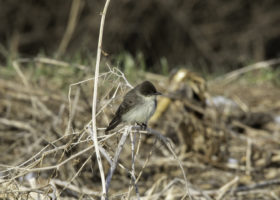
Bad Weather Yields Phoebe Bonanza
Bad weather may create memorable birding for humans, but unusual concentrations of grounded migrants typically reflect stressful situations for the birds themselves. Three VCE staff recently experienced an unprecedented and unforgettable gathering of Eastern Phoebes at Lake Runnemede in Windsor.
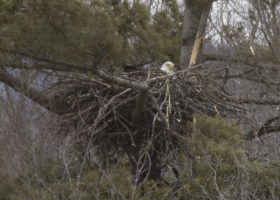
Outdoor Radio: Nesting Bald Eagles a Conservation Success Story
Wildlife biologist John Buck, of the Vermont Fish and Wildlife Department, joined VCE biologists Sara Zahendra and Kent McFarland to see a Bald Eagle nest and talk about their natural history and conservation success.
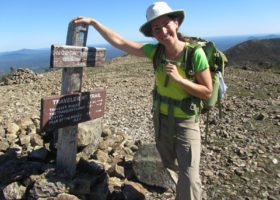
VCE Welcomes New Director of Communications
Karen Bourque joins VCE as our new Director of Communications.
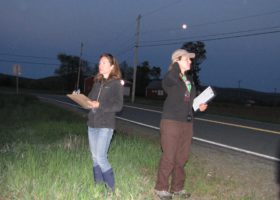
VCE Seeks Volunteers for Eastern Whip-poor-will Surveys
With spring on our doorstep, our whip-poor-will survey team and volunteers are looking forward to sunsets and moonlit nights this year more than ever! Sound like fun? Please join our adventurous volunteers in surveying Whip-poor-will routes across Vermont on moonlit nights.
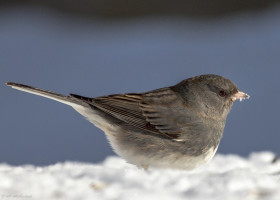
Juncos Flock in Large Numbers with Late Winter Storm
Many of us in Vermont experiences incredible numbers of Dark-eyed Juncos during this winter. But this past weekend was epic. With snow, ice, sleet, and rain blanketing the region for 3 days, bird watchers reported amazing numbers of juncos at their bird feeders and along highways.
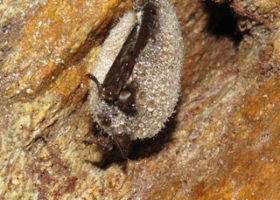
NH Winter Bat Surveys Reveal Decreasing Population
Recent surveys for bats in New Hampshire hibernacula, places where bats spend the winter, resulted in biologists finding a total of only 26 bats. In 2008, the same hibernacula had nearly 4,000 bats.
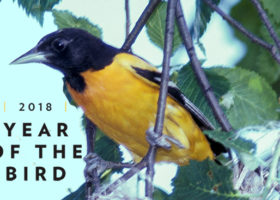
Sipping for Songbirds
Three-quarters of the world’s coffee farms destroy forest habitat to grow coffee under full sun. With thoughtful consumption, coffee drinkers can help save songbirds one cup at a time.
